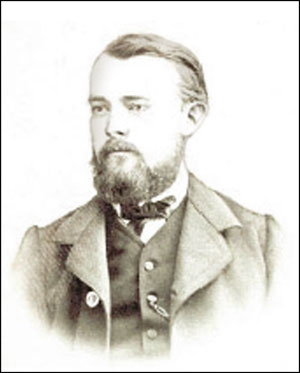Émile Deyrolle on:
[Wikipedia]
[Google]
[Amazon]
 Émile Deyrolle (1838–1917) was a French
Émile Deyrolle (1838–1917) was a French
Full text online here
Addenda includes price lists of equipment and books supplied by Deyrolles et fils *Émile Deyrolle (c.1892) ''Oiseaux: avec 132 figures dans le texte et 27 planches en couleur.'' (Birds: with 132 figures and 27 plates in color) En Histoire Naturelle de la France. 3d Partie. Paris: par Deyrolle, É., Naturalist
Full text online here
Deyrolle Taxidermy shop in ParisDeyrolles
Flickr
BHL
with Paul Groult ''Le Naturaliste journal des échanges et des nouvelles''.Paris :Bureaux à Paris,1879–1910.
Mineral Record
Labels 1838 births 1917 deaths French naturalists 19th-century French botanists French lepidopterists Date of birth missing Date of death missing 19th-century French zoologists 20th-century French zoologists 20th-century French botanists {{France-scientist-stub
 Émile Deyrolle (1838–1917) was a French
Émile Deyrolle (1838–1917) was a French naturalist
Natural history is a domain of inquiry involving organisms, including animals, fungi, and plants, in their natural environment, leaning more towards observational than experimental methods of study. A person who studies natural history is cal ...
and natural history dealer in Paris
Paris () is the Capital city, capital and List of communes in France with over 20,000 inhabitants, largest city of France. With an estimated population of 2,048,472 residents in January 2025 in an area of more than , Paris is the List of ci ...
.
The business was originally owned by his naturalist grandfather, Jean-Baptiste Deyrolle who opened his shop in 1831 at 23, Rue de la Monnaie. Émile’s father Achille Deyrolle ran the business for many years. Émile took over in 1866. The address from 1881 (and now) was (and is) 46, Rue du Bac, the former home of Jacques Samuel Bernhart. Deyrolle specialized in natural history publications and specimens taxidermy
Taxidermy is the art of preserving an animal's body by mounting (over an armature) or stuffing, for the purpose of display or study. Animals are often, but not always, portrayed in a lifelike state. The word ''taxidermy'' describes the proces ...
, minerals
In geology and mineralogy, a mineral or mineral species is, broadly speaking, a solid substance with a fairly well-defined chemical composition and a specific crystal structure that occurs naturally in pure form.John P. Rafferty, ed. (2011): M ...
, rock
Rock most often refers to:
* Rock (geology), a naturally occurring solid aggregate of minerals or mineraloids
* Rock music, a genre of popular music
Rock or Rocks may also refer to:
Places United Kingdom
* Rock, Caerphilly, a location in Wale ...
s, fossils
A fossil (from Classical Latin , ) is any preserved remains, impression, or trace of any once-living thing from a past geological age. Examples include bones, shells, exoskeletons, stone imprints of animals or microbes, objects preserved ...
, botanical specimens, shells, taxidermy
Taxidermy is the art of preserving an animal's body by mounting (over an armature) or stuffing, for the purpose of display or study. Animals are often, but not always, portrayed in a lifelike state. The word ''taxidermy'' describes the proces ...
, microscopic specimens and microscopes
A microscope () is a laboratory instrument used to examine objects that are too small to be seen by the naked eye. Microscopy is the science of investigating small objects and structures using a microscope. Microscopic means being invisibl ...
.
References
*Jacques-Marie-Frangile Bigot
Jacques Marie François Bigot (14 October 1818 – 14 April 1893) was a French naturalist and entomologist most noted for his studies of Diptera. He was one of two sons of physician Jacques Bigot (1757–1842) and Marie Françoise Euphrosine (nà ...
1868 ''Guide de l'amateur d'insectes : comprenant les généralités sur leur division en ordres, l'indication des utensiles et les meilleurs procédés pour leur faire la chasse, les époques et les conditions'' Société entomologique de France.Edition: 3e éd., rev., cor. et augm. Paris :chez DeyrollFull text online here
Addenda includes price lists of equipment and books supplied by Deyrolles et fils *Émile Deyrolle (c.1892) ''Oiseaux: avec 132 figures dans le texte et 27 planches en couleur.'' (Birds: with 132 figures and 27 plates in color) En Histoire Naturelle de la France. 3d Partie. Paris: par Deyrolle, É., Naturalist
Full text online here
External links
Deyrolle Taxidermy shop in Paris
Flickr
BHL
with Paul Groult ''Le Naturaliste journal des échanges et des nouvelles''.Paris :Bureaux à Paris,1879–1910.
Mineral Record
Labels 1838 births 1917 deaths French naturalists 19th-century French botanists French lepidopterists Date of birth missing Date of death missing 19th-century French zoologists 20th-century French zoologists 20th-century French botanists {{France-scientist-stub